Munchkin Cat Breed – The Lovable Feline Companion
Munchkin cat breeds have historically sparked controversy due to their genetic mutation. Their characteristic long bodies, short legs, and affectionate personalities are what set them apart. However, it wasn’t until 2003 that TICA (The International Cat Association) officially recognized this distinctive breed, despite their existence for years prior.
By: Dorris Abraham
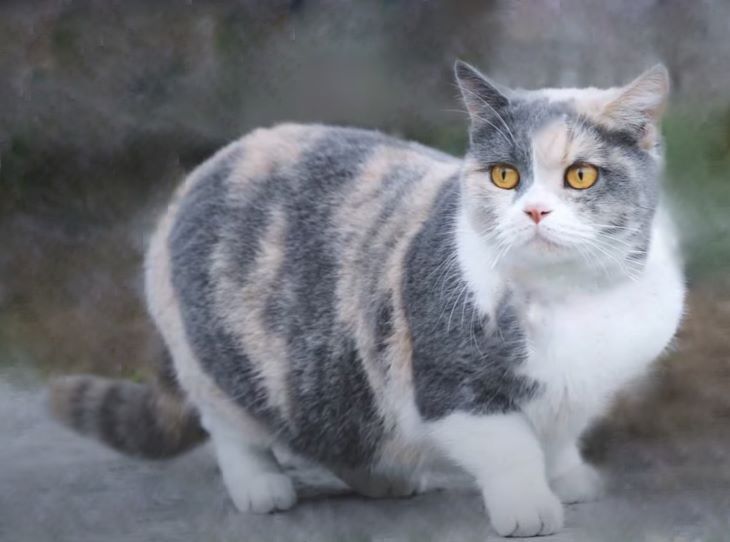
The information in this article is intended to educate cat parents and is not a substitute for veterinary guidance. In case of any concerns about your cat’s health, please talk with your veterinarian.
Still many cat breeders hesitate to recognize and accept this breed due to its rarity and high cost when available.
If you’re intrigued by the name Munchkin, drawn to its appearance, and eager to learn about its history, characteristics, and care needs, this article is a must-read from start to finish.
Click to learn: Cats That Look Like Leopards
Brief History Of Munchkin Cats
Before exploring the characteristics and other aspects of Munchkin Cats, it’s essential to understand their history.
Stories of cats with short legs date back, but the Munchkin breed formally began in 1983. TICA accepted the Munchkin breed in 1994 in its New Breed Development Program and finally in 2003 accepted it as a distinctive breed.
Munchkin cats owe their existence to a genetic mutation that spontaneously occurred in domestic cat populations, observed across various locations and periods.
Today, people have mixed Munchkin cats with other kinds of cats to create new breeds with short legs, such as the Minuet, Bambino, Scottish Kilt, and Dwelf.
However, some prominent cat groups, such as the Cat Fancier Association (CFA), the Governing Council of the Cat Fancy in the UK (GCCF), or Féline International Féderation (Fifé), oppose these breeds due to concerns about their body shape and potential health risks.
Click to learn What are pedigreed cats?
Characteristics Of Munchkin Cat Breeds
Munchkin cats are famous for their one-of-a-kind looks and sweet nature. Let’s check out the main things that make these cats so special.
Physical Appearance
Munchkin cats are a special breed known for their short legs. They’re about the same size as a regular cat, but their legs are much shorter, making them look smaller. Their legs can be a little shorter than normal, or so short they’re almost touching the ground. Munchkins come in three different leg lengths:
- Standard Munchkins have legs that are just a little bit shorter than a normal cat’s.
- Super-short Munchkins have legs about 2 to 3 inches shorter than a regular cat’s.
- Rug hugger Munchkins have the shortest legs, closest to the ground.
Despite their short legs, the rest of a Munchkin’s body is pretty much the same as a typical house cat. They usually weigh between 6 and 9 pounds and have soft, fluffy fur that can be short or long. Some people think they resemble a cat version of a Dachshund dog, earning them the nickname “sausage cats” at times.
Aside from their unique leg length, Munchkins have a rounded head, large eyes, and a short, plush coat that can come in various colors and patterns, including solid, tabby, and pointed like other cat breeds.
Personality
Munchkin cats are fun-loving and always ready to play. They love to run, jump, and play with toys, and they are often described as “ferret-like” in their behavior. They are also very curious and love exploring their surroundings, usually getting into mischief.
Despite their active nature, Munchkin cats are also very affectionate and loving towards their owners. They enjoy cuddling and being petted, and they are known to form strong bonds with their human companions.
Health
Like all cat breeds, Munchkin cats are prone to certain health issues. However, despite their short legs, Munchkin cats are generally healthy and have 12-15 years of lifespan.
Some potential health issues that Munchkin cats may face include:
- Lordosis: a condition that causes the spine to curve inward, leading to mobility and pain problems.
- Pectus Excavatum: a condition that causes the chest to sink inward, affecting the heart and lungs.
- Osteoarthritis: a degenerative joint disease that can cause joint pain and stiffness.
According to TICA, Munchkins do not possess any genes that make them ill. Their short legs are due to a unique gene that affects only their leg bones, not their spine or other bones.
TICA also states that Munchkins aren’t more prone to arthritis or walking difficulties compared to other cats. Regular veterinary visits can help keep Munchkins in good health.
Interesting Read: Exotic Longhair Cat Breed
Taking Care Of Your Munchkin Cat
Munchkin cats have specific care requirements to ensure their well-being. Let’s explore how to keep your short-legged companion happy and healthy:
Diet
Like all cats, Munchkin requires a balanced and nutritious diet to maintain their health and well-being. Ensure you provide them with standard cat food that suits their age and activity level. Wet food is generally best, but dry food is okay for snacks.
Munchkin cats are prone to obesity due to their short legs and love of food, so monitoring their food intake and providing plenty of opportunities for exercise and play is important.
Grooming
Caring for your Munchkin’s fur depends on its length. Short-haired Munchkins need brushing once a week, while long-haired Munchkins require more frequent brushing to prevent tangles.
Munchkins clean themselves, but their short legs can make it challenging. Bathe them occasionally to help keep them clean, and also trim their claws and clean their ears regularly.
Munchkins love to play and run around, so they don’t need much extra exercise. Provide them with toys, short cat trees, and scratchers to help them burn off energy. They’re intelligent and can learn to fetch and walk on a leash. Introduce them to family and other pets early to help them feel comfortable.
Feed your Munchkin high-quality cat food and provide fresh water. Ensure the food container, litter box, and water dishes are easily accessible and not too tall for your cat. Consult with a veterinarian to make sure your feline gets all the essential nutrients they need.
Exercise And Play
Munchkin cats are highly active and playful, needing ample opportunities for exercise and play to keep them mentally and physically engaged.
They delight in learning tricks and can be trained to walk on a leash or play fetch. Use clicker training to teach them new skills and enjoy quality bonding time together. Despite their short legs, Munchkin cats love running and playing, climbing, and engaging with toys. While they may not jump as high as other cats, a cat tree can provide them with the height they crave for exploration and play.
Healthcare
Regular check-ups with a veterinarian are important for all cats, including Munchkin cats. Keep their vaccinations updated and provide them with necessary preventative care, such as flea and worm treatments.
If you notice any changes in your Munchkin cat’s behavior or health, such as lethargy, loss of appetite, or difficulty moving, it’s important to seek veterinary care immediately.
Different Munchkin Cat Breeds
While the Munchkin cat is a breed in itself, several variations of Munchkin cats have been developed through selective breeding. Here are a few of the most popular Munchkin cat breeds:
Standard Munchkin
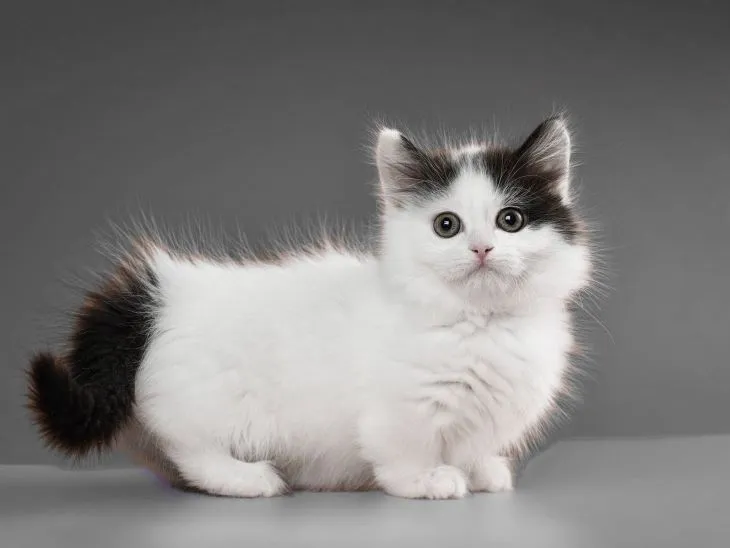
The Standard Munchkin is the original Munchkin cat breed, characterized by its short legs and medium-sized body. They can come in various colors and patterns, including solid, tabby, and pointed.
Napoleon Munchkin
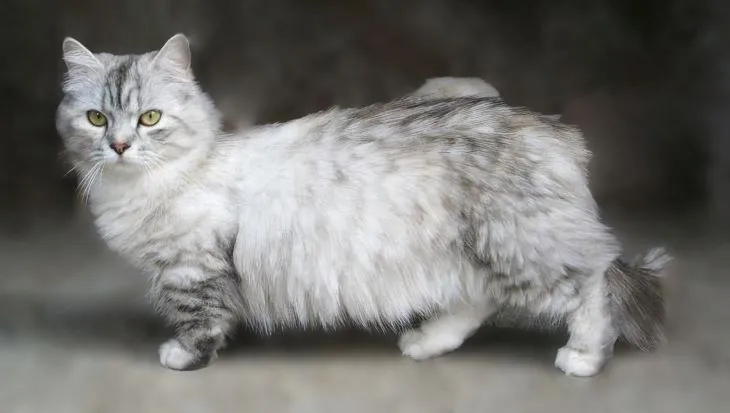
The Napoleon Munchkin is a cross between a Munchkin and a Persian cat, resulting in a cat with short legs and a round, fluffy face. They have a sweet and gentle personality and make excellent lap cats.
Bambino Munchkin

The Bambino Munchkin is a cross between a Munchkin and a Sphynx cat, resulting in a hairless cat with short legs. It is very affectionate and requires regular bathing to keep its skin healthy.
Minskin Munchkin
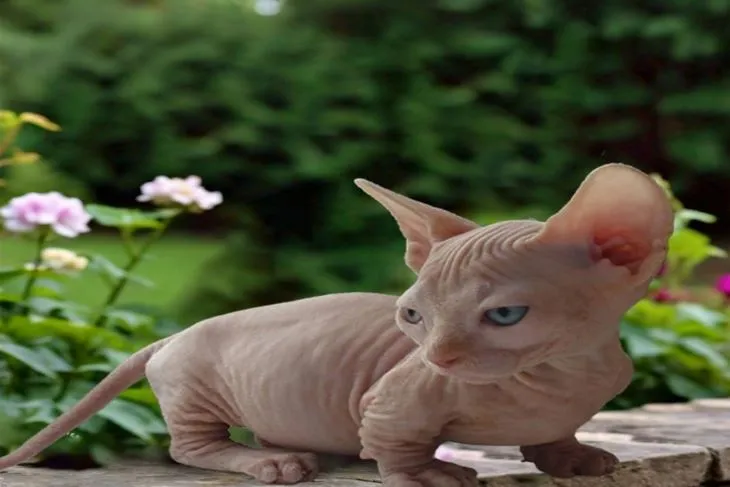
The Minskin Munchkin is a cross between a Munchkin and a Sphynx cat, with some Devon Rex and Burmese thrown in. They have short legs, a sparse coat, and large ears and are known for their playful and mischievous personality.
Lambkin Munchkin
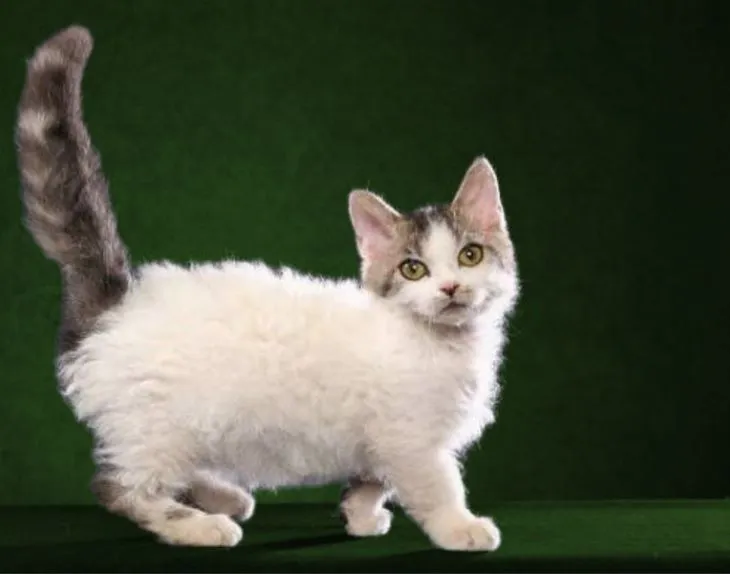
The Lambkin Munchkin is a cross between a Munchkin and a Selkirk Rex cat, resulting in a cat with short legs and a curly, wool-like coat. They are very affectionate and make excellent companion cats.
Kinkalow
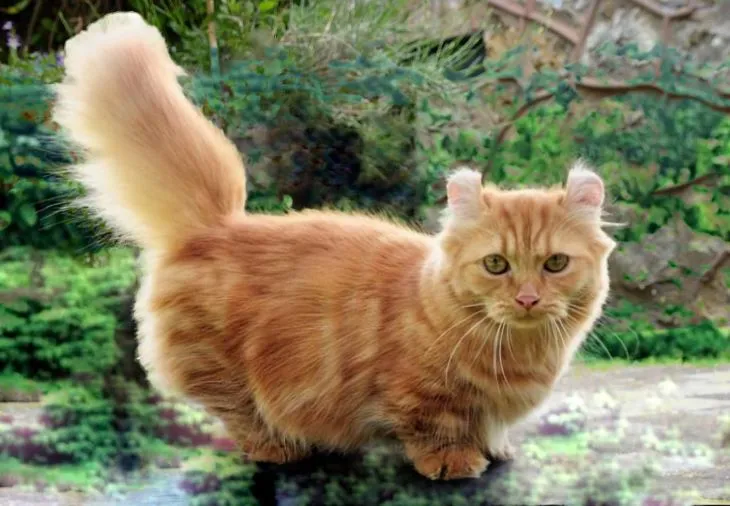
The Kinkalow is a cross between a Munchkin and an American Curl. These cats have the distinctive curled ears of the American Curl, the short legs of the Munchkin, and a long tail.
They are famous for their playful and affectionate nature and make excellent companions. To groom them, brush their curly fur twice weekly and clean their ears. With good care, they can live for 12 to 15 years.
Dwelf
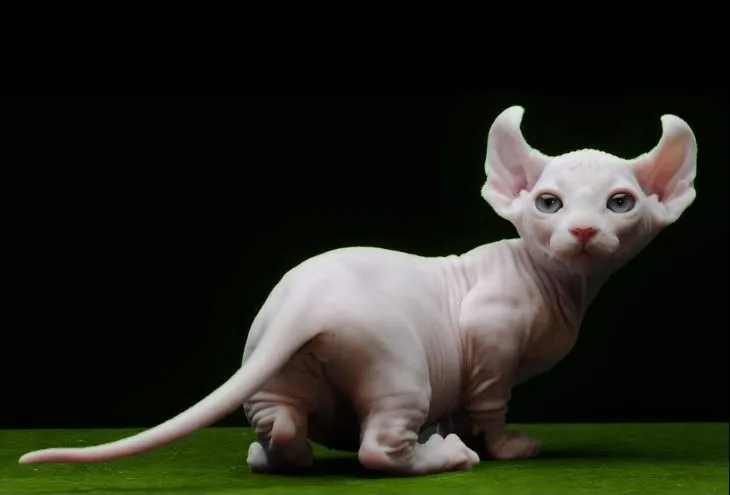
The Dwelf is a rare breed that crosses between a Munchkin, a Sphynx, and an American Curl. These cats have short legs, curled ears, and are hairless. Since they have no fur, protect their skin from the sun and keep them warm in cold weather.
Dwelfs are popular for their friendly and outgoing personalities. They require regular grooming to keep their skin healthy. Dwelfs are healthy and can live 12-15 years.
Genetta
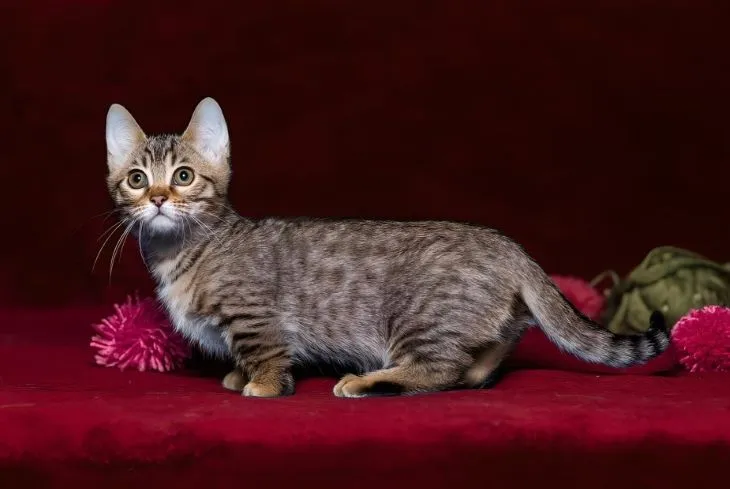
The Genetta cat mixes Munchkin, Savanna, and Bengal breeds. It has the beautiful spotted coat of the Bengal and the short legs of the Munchkin. Genetta cats are known for their energetic and playful nature and require plenty of mental and physical stimulation. Caring for a Genetta is easy; they can live 12-16 years.
Skookum
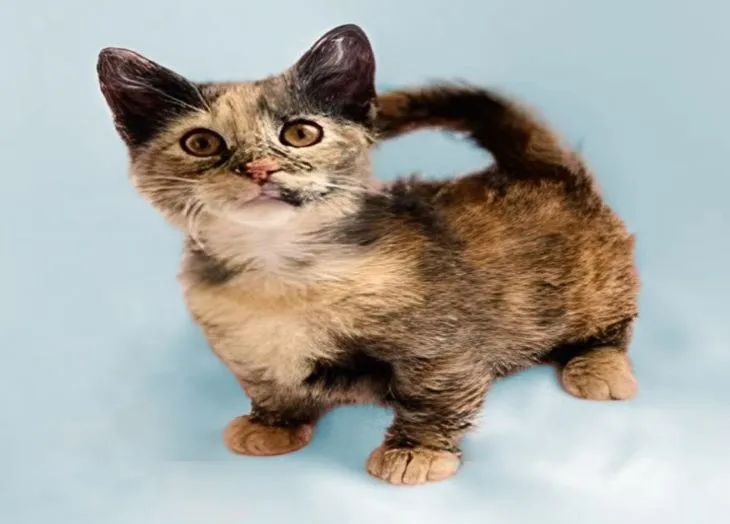
The Skookum is a cross between a Munchkin and a LaPerm breed. These cats have the LaPerm’s curly coat and the Munchkin’s short legs. Boy Skookums have kinkier fur than girl Skookums, who have soft and fluffy coats.
People love Skookums for their affectionate and gentle nature. They need proper grooming, like brushing their curly fur once or twice a week. With good care, skookums can live 10-15 years.
Frequently Asked Questions
Conclusion
Munchkin cat breeds are a charming and distinctive addition to the feline world, known for their short legs and playful personalities. While they may need additional care and attention because of their unique physical traits, they are delightful companions for cat lovers of every age.
If you’re thinking of welcoming a Munchkin cat into your family, ensure you research and choose a reputable breeder who prioritizes their cats’ health and well-being. With proper care and attention, your Munchkin cat can enrich your life with joy and companionship for years to come.
